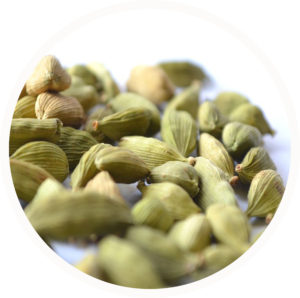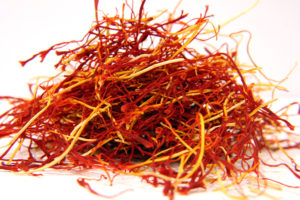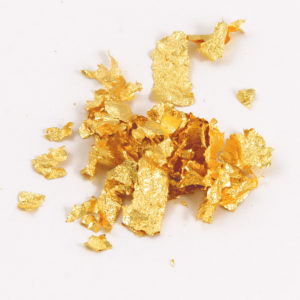 Summary-Health Benefits of Cardamom
Summary-Health Benefits of Cardamom
In ancient medical traditions, cardamom could cure a sore throat, teeth and gum infections, congestion, tuberculosis, stomach, kidney, and lung problems, and also be used as an antidote for spider and snake bites. It’s been long noted, and more recently in lab studies, to successfully treat urinary tract infections – even gonorrhea.
For centuries, cardamom has been touted as having aphrodisiac properties with the ability to cure impotency. In clinics using East Indian medicine practices, five grains of cardamom chewed three times a day is prescribed as a way to kill harmful H. pylori bacteria that causes intestinal infections and chronic pain.
In both early and modern medicine, cardamom is believed to have mood-elevating properties, so it’s used both as an antidepressant and in aromatherapy. It’s said to relieve problems with muscle spasms, and according to studies at the Central Food Technological Research Institute in India, contains several blood clot-preventing components. Studies show that the many layers of phytonutrients in cardamom even offer cancer protection and improved blood circulation, which is heart protective.
Nutritionally, no other vitamin or
mineral ingredient in cardamom comes close to the manganese content, which is 80 percent of the recommended value in a single tablespoon. You’ll also find smaller amounts of fiber and iron, as well as plenty of vitamin C, calcium, magnesium, potassium, pyridoxine, riboflavin, thiamine,
vitamin A, and zinc.
Volatile oils in this spice are also important, limonene being the most prominent, as well as pinene, sabinene, myrcene, phellandrene, terpinene, terpinolene, linalool, terpinen-4-oil, a-terpineol, a-terpineol acetate, citronellol, nerol, geraniol, and methyl eugenol. Studies show that these oils are the main reason for its effectiveness in treating gastrointestinal disorders.
Summary-Health benefits of Saffron

It must be noted that no one will eat an ounce of saffron in one sitting; recipes usually call for half a teaspoon or less, but
examining an ounce is a good way to determine the nutritional aspects of this intrigu
ing spice. First, the manganese content is off the charts at nearly 400% of the daily recommended value! Everything else seems a little chintzy after that, but the next-largest nutritional quantities also are quite impressive: vita
min C – 38%; magnesium – 18%; and iron – 17%. Potassium and vitamin B6 both impart 14% of the daily recommended value.
Manganese helps regulate blood sugar, metabolize carbohydrates, and absorb calcium. It also helps form tissues, bones, and sex hormones. Vitamin C is an infection fighter; iron purifies your blood; and the vitamin B6 content helps form red blood cells and assures nerves will function as they should. Potassium helps balance fluids in cells, which, if low, can cause painful muscle cramps.
Beyond that, saffron contains more than 150 volatile compounds, among others. Picrocrocin, for instance, is the main substance responsible for the strong taste. Safranal brings saffron its characteristic odor and fragrance. Crocin, which delivers the intense orange color, is an indication of this spice’s medicinal qualities, i.e. its powerful carotenoids and antioxidants that can protect your body from free radical damage.
Saffron extract has been shown to be capable of inhibiting and/or retarding the growth of tumors in a variety of experimental models in vivo. A topical application inhibited second-stage skin cancer, and oral administration of saffron extract restricted soft tissue sarcomas and inhibited tumor cell growth in mice. Several studies combined indicated that saffron also may be a promising agent for reducing the side effects from cisplatin (an early, often used cancer drug), including nephrotoxicity (toxicity in the kidneys).1
In another study, saffron was examined for its effects on aluminum toxicity and found to significantly reverse harmful aluminum-induced symptoms, such as memory loss and neurological disorders. Saffron extracts improved lipid peroxidation (important for inhibiting diseases in the body) and glutathione levels, which function in the destruction of free radicals. Scientists concluded that saffron has “neuroprotective potential under toxicity.”2
Summary-health benefits of Gold
Gold compounds have increasingly been used to treat several types of cancer, the most impressive being its use in chemotherapy for tumours. The use of gold is encouraging in the treatment of prostate cancer, where injection of microscopic gold pellets help to inhibit tumour growth. “The position of the gold grains can be dete

cted using X-rays, allowing doctors to target the prostate position within one or two millimetres,” explains Halliday.
One of the earliest treatments for rheumatoid arthritis, gold therapy, a disease-modifying anti-rheumatic drug (DMARD), has declined in terms of use over the last two decades due to the arrival of better tolerated biologic and non-biologic DMARDs, such as methotrexate.
he most common form of gold treatment is via injection while the oral gold formulation appears to be less effective. Patients usually receive weekly injections which may eventually reduce to once a month.
According to a review, people with this condition receiving gold injections had 30% fewer swollen joints compared to people receiving placebo. The authors concluded that “although its use can be limited by the incidence toxicity, injectable gold has an important clinically and statistically significant benefit in the short term treatment of patients with rheumatoid arthritis.
Studies and information supporting pharmacological uses of Cardamom
https://www.ncbi.nlm.nih.gov/books/NBK92774/
https://scienceandfooducla.wordpress.com/2014/06/24/cardamom/
http://blogs.discovermagazine.com/scienceandfood/2014/06/24/cardamom/#.Ws–nNPwZdA
https://www.sciencedirect.com/topics/food-science/cardamom
https://www.jenreviews.com/cardamom/
https://www.sigmaaldrich.com/life-science/nutrition-research/learning-center/plant-profiler/elettaria-cardamomum.html
Studies and information supporting pharmacological uses of Cardamom
https://www.ncbi.nlm.nih.gov/pmc/articles/PMC3731881/
https://www.researchgate.net/publication/297951456_Effect_of_Crocus_sativus_extracti_on_the_concentration_of_glutamic_acid_in_the_vitreous_body_in_rabbits_with_chronic_ocular_hypertension
https://www.researchgate.net/publication/288970755_Evaluation_of_antimicrobial_effects_of_Crocus_sativus_stigmas_constituents
https://www.researchgate.net/publication/283968226_Effects_of_Saffron_and_its_Active_Constituents_Crocin_and_Safranal_on_Prevention_of_Indomethacin_Induced_Gastric_Ulcers_in_Diabetic_and_Nondiabetic_Rats
https://www.researchgate.net/publication/270624458_Phytochemistry_and_Pharmacology_of_Saffron_the_Most_Precious_Natural_Source_of_Colour_Flavour_and_Medicine
https://pdfs.semanticscholar.org/f487/b3e6323ce88fbb88820416ab1aca5cd9d2c9.pdf
https://onlinelibrary.wiley.com/doi/full/10.1002/ptr.1647
Historic and medicinal uses for edible gold and gold
http://www.semarthritisrheumatism.com/article/0049-0172(87)90017-5/fulltext
https://link.springer.com/content/pdf/10.1007%2FBF03215464.pdf
https://www.ncbi.nlm.nih.gov/pmc/articles/PMC3347577/
https://news.harvard.edu/gazette/story/2006/02/how-gold-and-other-medicinal-metals-function-against-rheumatoid-arthritis-and-other-autoimmune-diseases/
https://www.sciencedirect.com/science/article/pii/S0010854509000484
https://www.sciencedirect.com/science/article/pii/S187395981100086X
https://www.smithsonianmag.com/innovation/how-doctors-harnessing-power-gold-fight-cancer-180949436/

Product Reviews